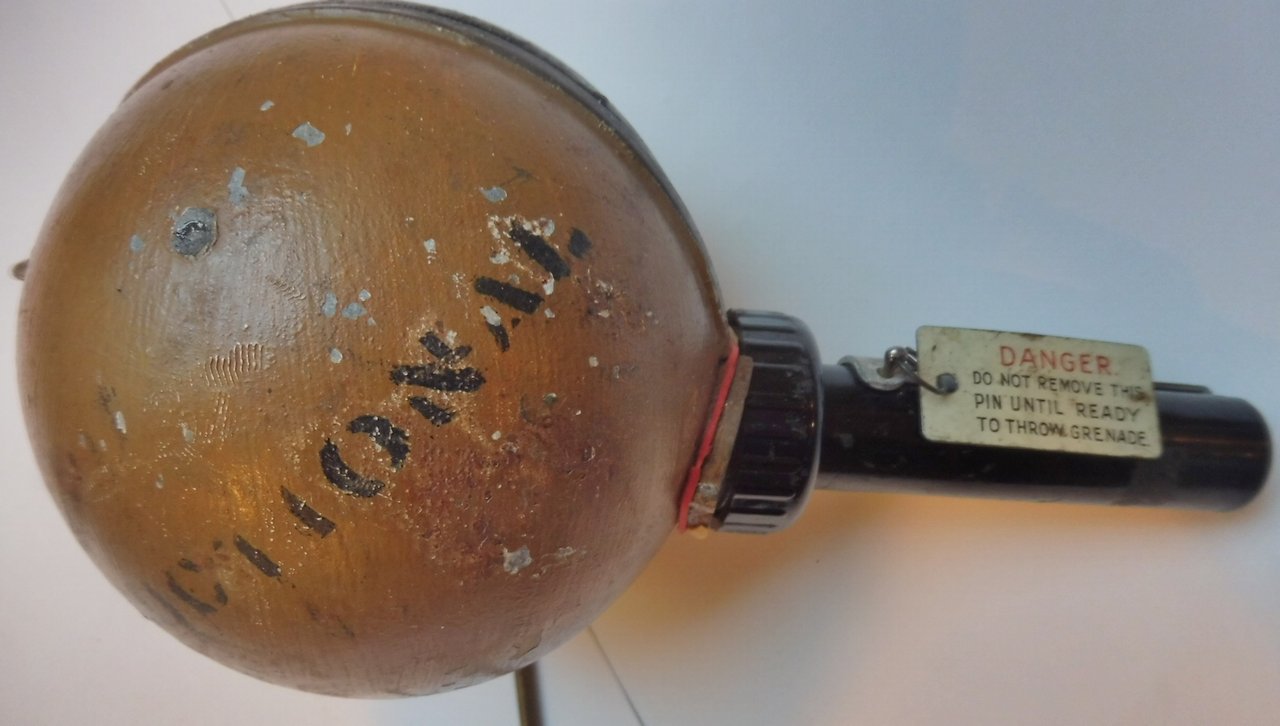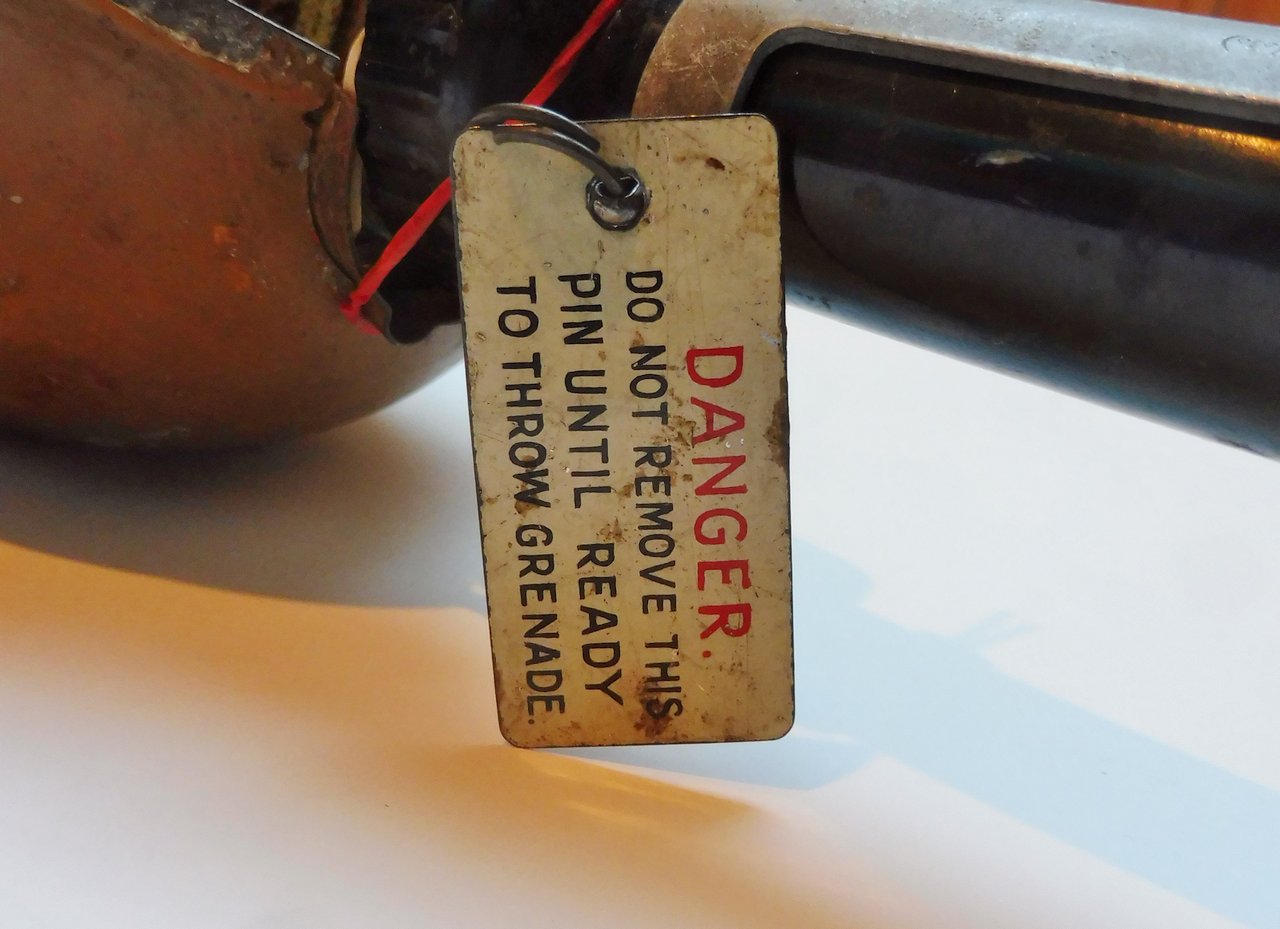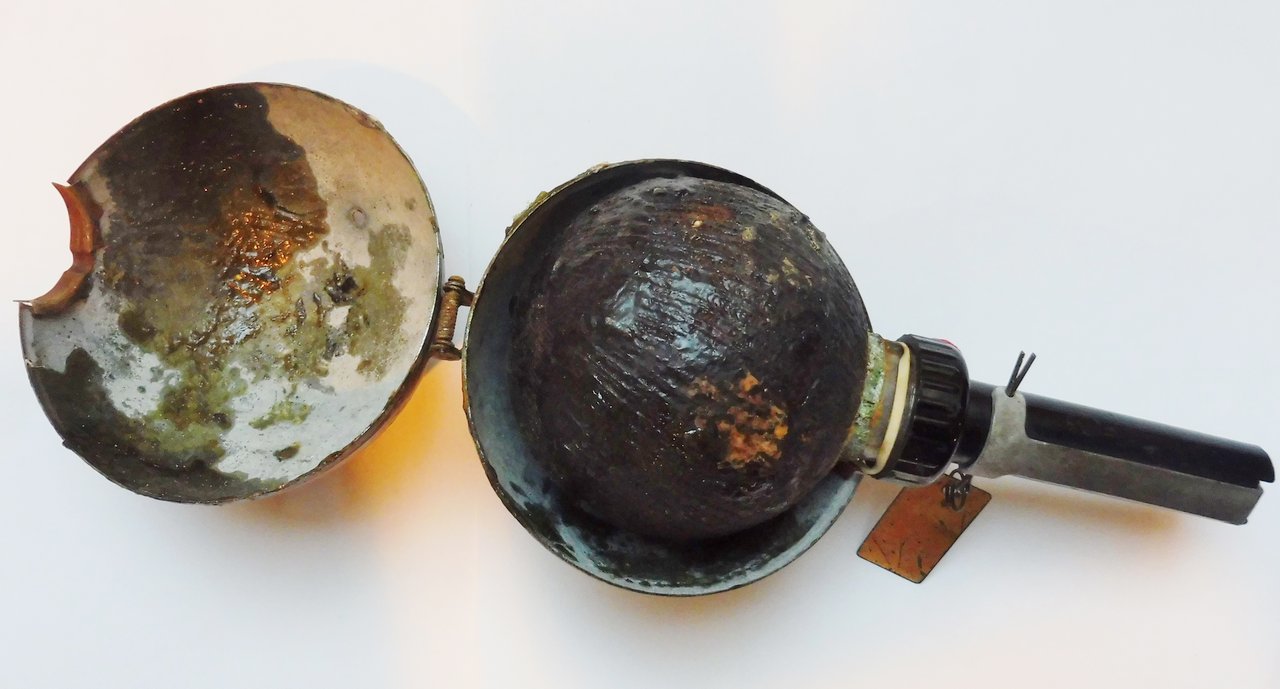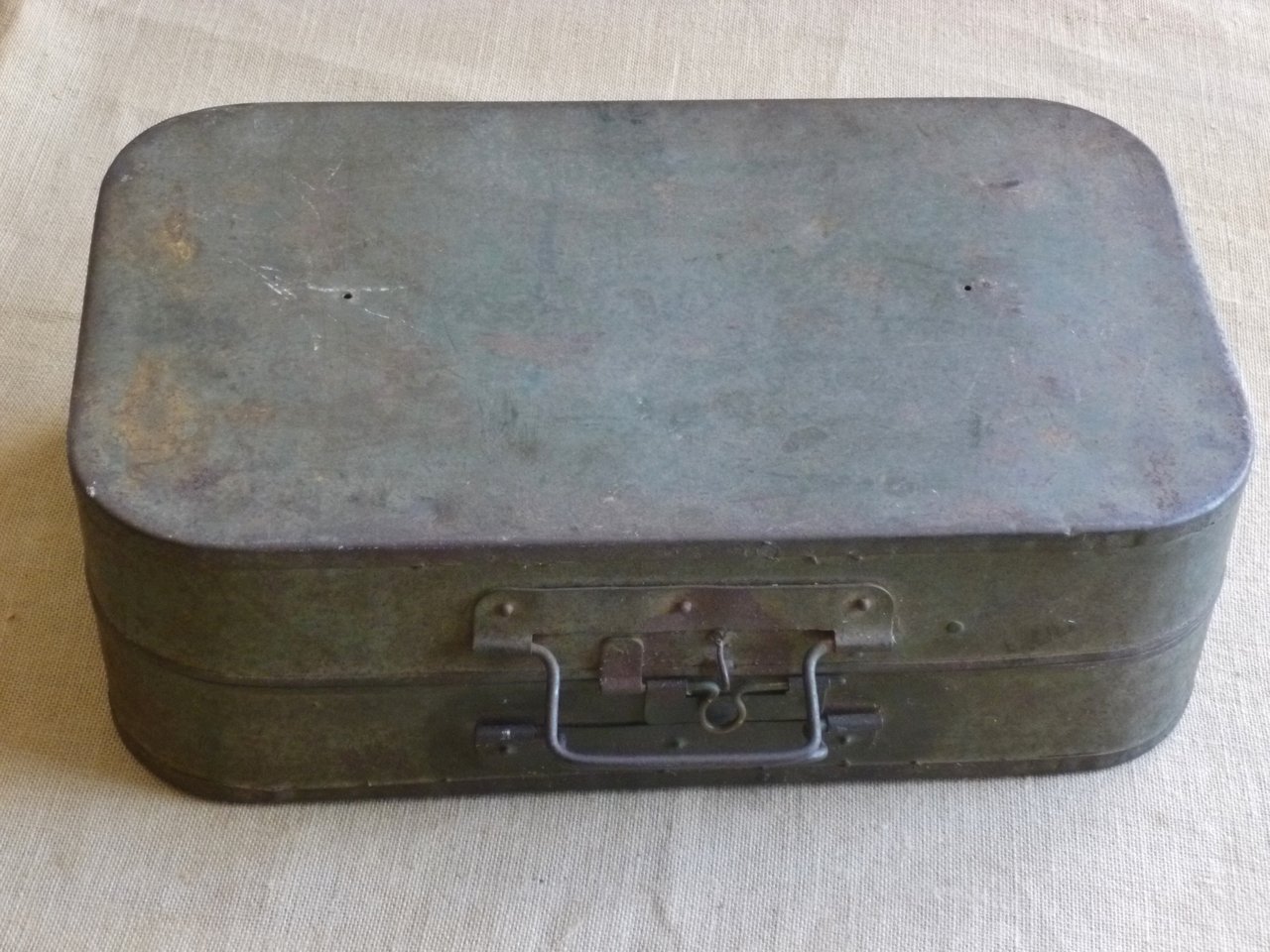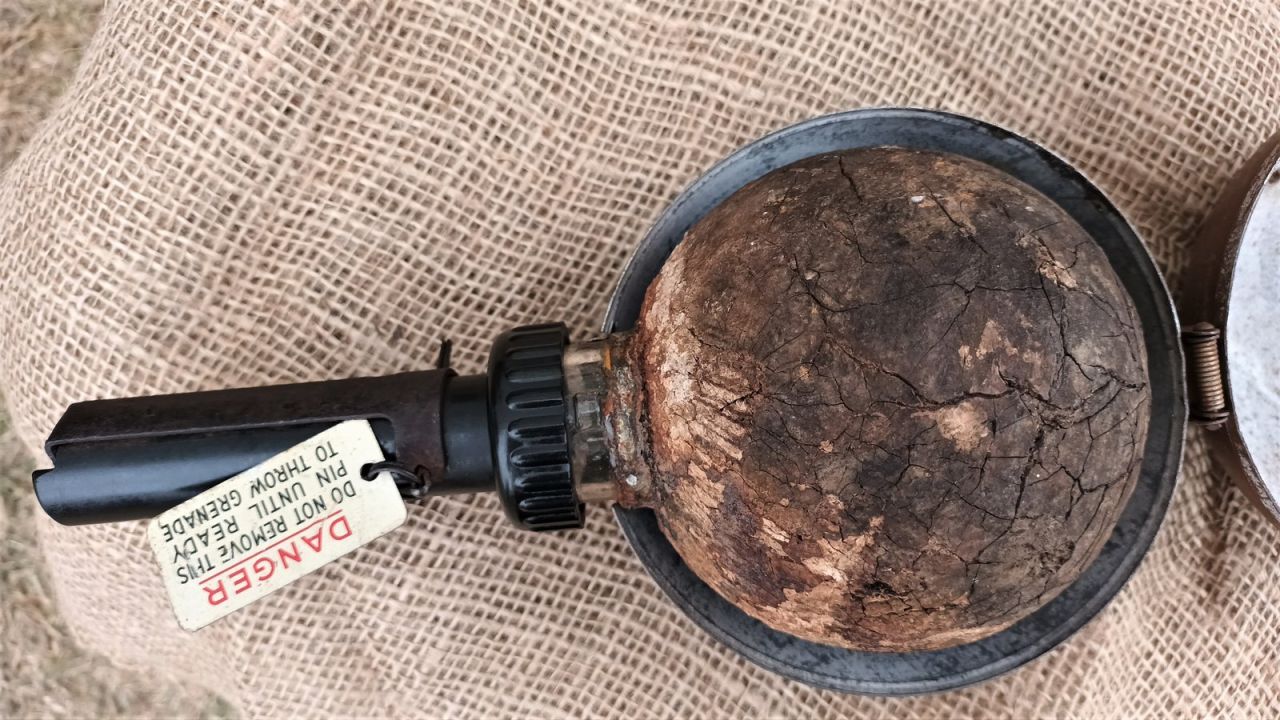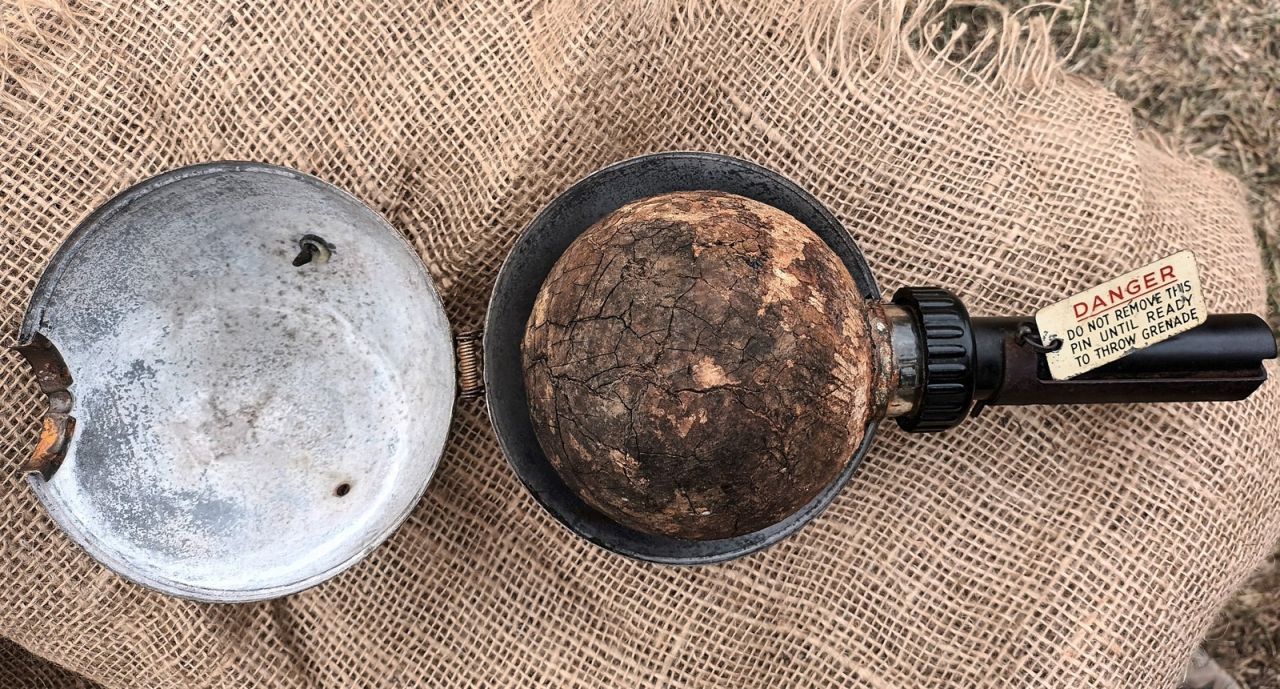A Number 74 Anti-Tank grenade, also known as a ‘Sticky Bomb’ or ST Grenades.
This grenade consisted of a round glass ball shaped flask that contained the explosive charge, and a knitted woollen cover was fitted over this glass flask, and this was coated in Bird Lime - a glue like substance. The Mark 1 was made up to 1942 and was made of glass. The Mark 2, from 1943 had different fittings.
A Bakelite handle was screwed onto the glass flask, so the grenade could be used.
For transporting and storing, a ball shaped metal cover was fitted over the round glass flask, to stop it sticking to everything, and the Bakelite handle was removed.
To use this grenade - you first screwed on the handle, and then you removed the metal cover over the glass flask, but you had to be very careful that you did not stick the grenade to something, or your clothes!
Then when you needed to use it, you pulled out the safety pin, but you made sure that you held the metal lever in the handle still in place.
You could either throw or go up to and stick this grenade to what you wanted to blow up, and as soon as you let go of the handle, the metal lever fell away, which allowed the spring loaded firing pin to strike the detonating cap, which gave you a 5 second fuze / delay before the grenade went off.
In the War Diary of Military Intelligence (Research) it is stated it was developed by Major M. R. Jefferies and was being experimented by November 1939. By June 1940 the Diary states; ' After many failures the Sticky Bomb had been perhaps not perfected, but certainly made a practical proposition. A successful demonstration before the Prime Minister resulted in the Ministry of Supply being instructed to turn out one million of these bombs.
Tom Miller, a Kent Auxilier recalled "We tried these things up at The Garth, trying to throw them at vehicles and various things and we found they were of no use. From a practicle point of view, anything that had been along a country road was covered in dust and of cause the sticky bomb would not stick to dust, it just stuck there for a second or two and flopped off, so we abandoned that idea. Still it was a good job to have tried it out".
